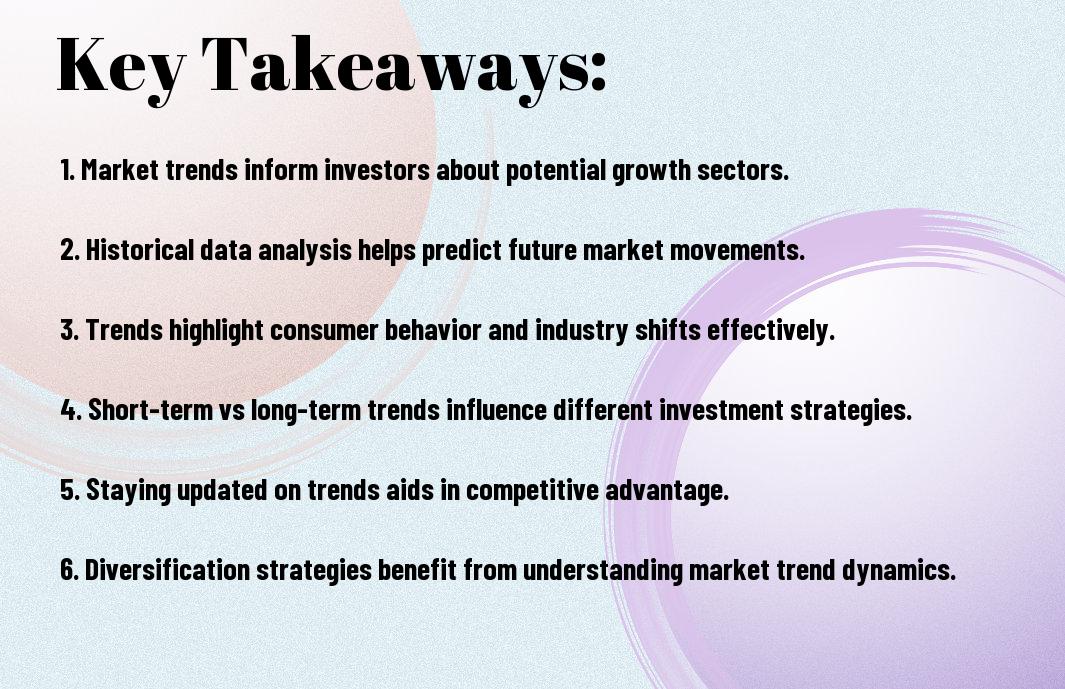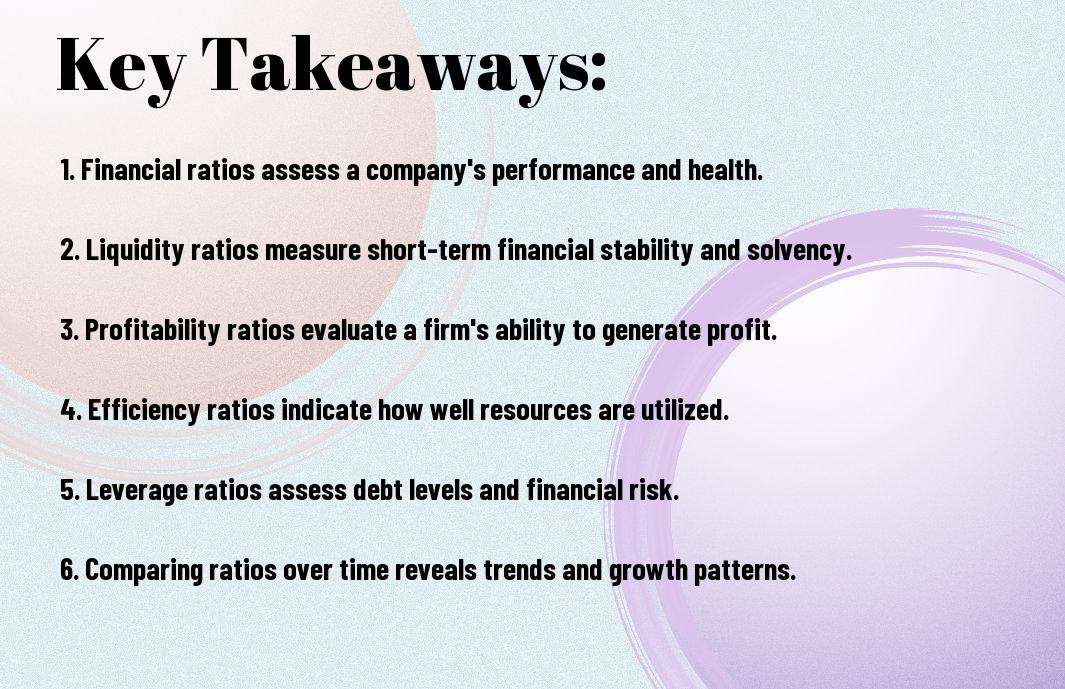Most people are looking for ways to simplify their investment strategies while still achieving their financial goals. Automated investing can be the key to streamlining your financial journey, allowing you to set your preferences and watch your portfolio grow with minimal effort. By leveraging technology, you can take advantage of diversified investments, lower fees, and consistent contributions, all tailored to your unique objectives. This approach not only saves you time but also helps remove emotional decision-making from your investments, setting you up for long-term success.
Key Takeaways:
- Time-saving: Automated investing allows you to manage your portfolio with minimal time input, freeing up hours that can be spent on other priorities.
- Consistency: Algorithms maintain a disciplined investment strategy, helping reduce emotional decision-making during market fluctuations.
- Cost-effective: Many automated investing platforms offer lower fees than traditional financial advisors, making investing more accessible.
- Diversification: Automated platforms often facilitate a broad range of asset allocation, helping to spread risk across various investments.
- Accessibility: Automated investing provides opportunities for individuals of all experience levels to participate in the market without needing extensive knowledge.

Understanding Automated Investing
Your journey into the world of automated investing begins with understanding its basic principles. Automated investing is a technology-driven approach that simplifies the investing process, often through algorithms and robo-advisors, allowing you to grow your wealth without the burdens of manual management.
What is Automated Investing?
The concept of automated investing revolves around the use of software to manage your investment portfolio automatically, minimizing the need for your direct involvement in daily trading decisions.
How It Works
Among its key features, automated investing utilizes algorithms to create and manage your investment strategy based on your financial goals and risk tolerance.
Automated investing platforms typically start by gathering information about your financial situation, investment goals, and preferences. Based on this data, they construct a diversified portfolio tailored specifically for you. The algorithms continuously monitor market trends and make adjustments as necessary to optimize your investment performance. This hands-off approach enables you to focus on other priorities while your money works for you.

Advantages of Automated Investing
Assuming you want a more efficient way to grow your wealth, automated investing offers a range of advantages that can enhance your financial journey. With systematic algorithms managing your investments, you can benefit from consistent portfolio rebalancing, diversified asset allocation, and tailored strategies that align with your financial goals. This means less stress and more confidence in your investment choices, allowing you to focus on other important aspects of your life.
Cost Efficiency
To maximize your returns, automated investing platforms often come with lower fees than traditional financial advisors. By using technology to manage investments, these platforms reduce operational costs, passing the savings on to you. This means you keep more of your money working for you rather than paying high commissions or management fees, ultimately improving your long-term financial outcomes.
Time Savings
Any investor knows that staying on top of the market can be time-consuming. Automated investing removes the need to constantly monitor your portfolio, allowing you to spend your time on more important activities. By setting predetermined investment parameters, you can let algorithms handle the complexities of buying, selling, and rebalancing your assets, freeing you from the daily grind of investment management.
This time savings not only reduces the stress often associated with investing but also allows you to engage in other pursuits, whether that’s enhancing your career, spending time with family, or simply enjoying your hobbies. The automation process ensures your investment strategy runs smoothly in the background, allowing you to focus on your long-term financial goals without the daily distraction of market fluctuations.
Risk Management in Automated Investing
Once again, automated investing provides you with the tools to effectively manage risk within your portfolio. By utilizing algorithms, these platforms can evaluate various market conditions and adjust your investments accordingly. For a deeper understanding of how automated investing works, check out Automated Investing: What it is and how to Take Advantage …
Diversification Benefits
Above all, automated investing allows you to achieve diversification effortlessly. This enables your portfolio to spread risk across various asset classes, reducing the impact of any single investment’s poor performance. With automated platforms, you can gain exposure to multiple markets without needing extensive knowledge or constant monitoring.
Adaptive Algorithms
Any investor wants their portfolio to adapt to changing market conditions, and automated investing achieves this through adaptive algorithms. These advanced systems analyze real-time data to optimize your asset allocation continuously, ensuring that your investments remain aligned with your risk tolerance and financial goals.
Adaptive algorithms stand out by using machine learning techniques to adjust your portfolio dynamically based on new information and trends. This means your investments can respond in real-time to market fluctuations, allowing you to capitalize on opportunities and mitigate losses. The result is a more resilient investment strategy that keeps pace with the ever-changing financial landscape.
Accessibility and User Experience
Despite the complexities of the investment world, automated investing platforms have leveled the playing field, making investment accessible to everyone. These tools offer intuitive interfaces and algorithms that simplify the process, enabling you to invest your money without needing extensive knowledge or experience. You can easily set your financial goals and let the technology handle the rest, which removes barriers for numerous individuals who may have previously felt intimidated by traditional investing methods.
Investment for Everyone
Between diverse income levels and varying financial goals, automated investing caters to a wide audience. This democratization of investment opportunities means that you can start investing with minimal capital, ensuring your aspirations become attainable regardless of your financial background. This inclusive approach encourages you to participate in building wealth, allowing you to align your financial objectives with your lifestyle.
User-Friendly Platforms
By prioritizing user experience, automated investing platforms ensure that navigating your financial journey is straightforward. These systems are designed with you in mind, featuring clean interfaces and easy-to-understand functionalities that promote confident decision-making. You won’t need to wade through convoluted processes; instead, you’ll find tools tailored to your needs.
Consequently, user-friendly platforms enhance your investing experience by providing clear and accessible information. Features such as guided tutorials, straightforward dashboards, and responsive customer support empower you to track your investments and make informed decisions easily. Over time, this ease of use fosters a deeper understanding of your finances, encouraging you to engage with and take control over your investment strategy actively.
Comparing Automated Investing with Traditional Investing
Many investors are considering the merits of automated investing in comparison to traditional methods. Below is a comparison of key factors to help you make an informed decision.
| Factor | Automated Investing | Traditional Investing |
|---|---|---|
| Management Style | Algorithm-driven | Human advisors |
| Minimum Investment | Lower | Higher |
| Investment Adjustments | Regularly automated | Manual and time-intensive |
Fees and Expenses
Between automated and traditional investing, fees and expenses can differ significantly. Automated platforms often charge lower management fees, allowing you to keep more of your investment returns. Conversely, traditional investing may involve higher fees due to advisor commissions and more personalized services.
Performance Tracking
The performance tracking capabilities also vary between these two investment styles. Automated investing platforms frequently offer robust digital tools that allow you to monitor your investments in real-time. This feature makes it easier for you to stay informed about your portfolio’s performance and make necessary adjustments without the need for intermediary communication.
But, while automated platforms offer convenient performance tracking, you might miss the insights and personal advice that traditional advisors provide. Evaluating performance through data can sometimes overlook the strategic nuances that a seasoned investor might catch. Balancing these two approaches can help you fine-tune your strategy and enhance your investment journey.
Future of Automated Investing
Not only is automated investing revolutionizing how you manage your wealth, but it is also becoming increasingly sophisticated. As you explore How Automated Investing Works, anticipate advancements in AI and machine learning to provide tailored investment strategies that align with your goals. This evolution signifies a promising future where investing becomes even more accessible and personalized.
Trends to Watch
Watch for the growing integration of robo-advisors with traditional financial services, allowing you to enjoy a hybrid approach. Additionally, the rise of ESG (Environmental, Social, and Governance) investing platforms is likely to reshape how you allocate your funds, focusing on socially responsible investment options tailored to your values.
Regulatory Changes
About the evolving landscape of automated investing, regulatory changes will impact how services are offered and the protection you receive as an investor. As the market matures, expect increased oversight aimed at enhancing transparency and accountability within robo-advisory firms.
Further adjustments to regulations may also encourage companies to adopt best practices in customer data protection and ethical investing. This evolution will empower you to make informed decisions while keeping your financial interests safeguarded. As the industry adapts, staying updated on these changes will be imperative for your investment strategy.
Summing up
With these considerations, automated investing offers you a streamlined approach to wealth management that combines convenience with efficiency. By utilizing algorithms and technology, you can optimize your investment strategy while minimizing emotional decisions and time commitment. This method allows you to diversify your portfolio, reduce costs, and stay disciplined in the face of market volatility. Ultimately, automated investing positions you to focus on your financial goals and achieve long-term success with minimal effort.
Q: What are the main advantages of using automated investing platforms?
A: Automated investing platforms offer several key benefits. First, they typically provide low fees compared to traditional investment methods, allowing investors to retain a greater portion of their returns. Second, these platforms often utilize algorithms to create and manage diversified portfolios, reducing the risk associated with investing. Third, automated investing allows for easy access to investment accounts 24/7, enabling individuals to monitor and adjust their portfolios when needed without the constraints of working hours. Lastly, automated investing promotes disciplined savings and investment habits, as it often incorporates features such as automatic rebalancing and reinvestment of dividends.
Q: How does automated investing help reduce emotional decision-making in investing?
A: Emotional decision-making can lead to impulsive actions that negatively impact investment performance. Automated investing addresses this issue by allowing algorithms to handle investment decisions based on predefined criteria and strategies. This reduces the likelihood of investors succumbing to fear or greed during market fluctuations. By adhering to a set investment plan and focusing on long-term goals, automated platforms help investors stick to their strategies without getting affected by momentary market conditions, leading to potentially more favorable outcomes.
Q: In what ways does automated investing accommodate different types of investors?
A: Automated investing platforms cater to a variety of investor types by offering customizable investment strategies based on individual risk tolerance, investment goals, and time horizons. Many platforms provide questionnaires that help assess an investor’s financial situation and preferences, allowing for personalized portfolio construction. Additionally, options range from conservative portfolios with lower risk and steady returns to more aggressive portfolios aiming for higher returns through increased exposure to stocks. This flexibility ensures that both novice and experienced investors can find suitable investment solutions tailored to their unique needs and circumstances.







